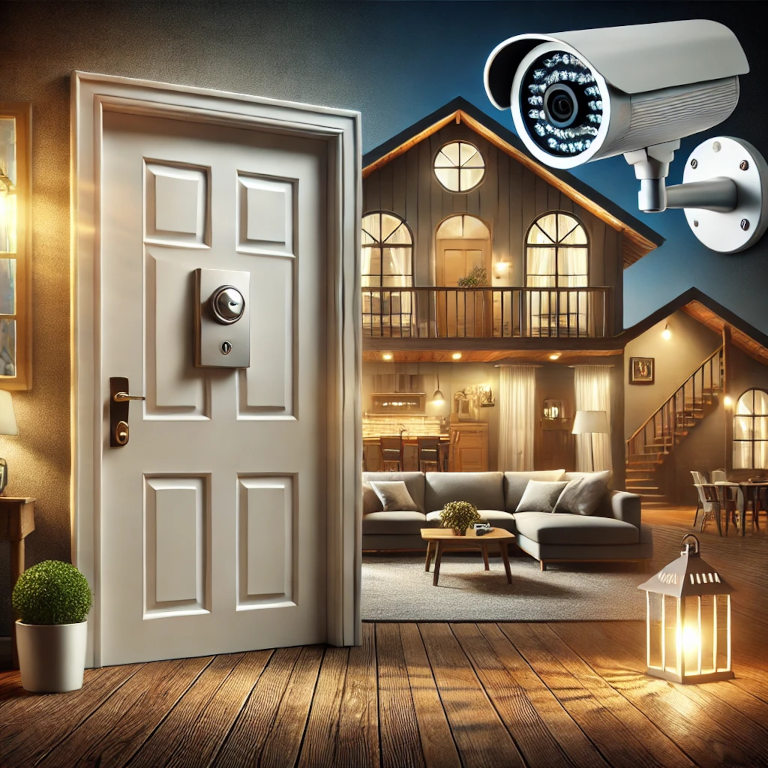Home safety and security are paramount concerns for homeowners and renters alike. Ensuring that your home is a safe haven requires a comprehensive approach that encompasses both preventive measures and modern security technologies. As an expert in Home Living, I will provide a detailed guide on home safety and security, exploring essential practices and advanced solutions to protect your home and loved ones. This article aims to offer valuable insights into creating a secure living environment.
Understanding Home Safety and Security
Home safety involves practices and measures to prevent accidents, injuries, and emergencies within the home. Home security focuses on protecting your home from intrusions, theft, and vandalism. Together, they form a holistic approach to creating a safe and secure living space.
Key Elements of Home Safety
1. Fire Safety:
- Smoke Alarms: Install smoke alarms on every level of your home, especially near bedrooms. Test them monthly and replace batteries annually.
- Fire Extinguishers: Keep fire extinguishers in key areas such as the kitchen, garage, and near fireplaces. Ensure everyone in the household knows how to use them.
- Escape Plan: Develop and practice a fire escape plan with all household members. Identify multiple exits and establish a safe meeting point outside the home.
2. Electrical Safety:
- Regular Inspections: Have a licensed electrician inspect your home’s wiring and electrical systems periodically to prevent hazards.
- Avoid Overloading Outlets: Do not overload electrical outlets or use damaged cords and plugs. Use surge protectors to safeguard electronic devices.
- GFCI Outlets: Install Ground Fault Circuit Interrupter (GFCI) outlets in areas prone to moisture, such as bathrooms, kitchens, and outdoor spaces.
3. Child Safety:
- Childproofing: Use safety gates, outlet covers, and cabinet locks to protect young children from potential dangers.
- Safe Storage: Store hazardous materials, medications, and sharp objects out of children’s reach.
- Supervision: Always supervise young children, especially around water, including bathtubs, pools, and buckets.
4. Preventing Falls:
- Clear Pathways: Keep walkways, stairs, and floors free of clutter and ensure they are well-lit.
- Install Handrails: Secure handrails on both sides of staircases and use non-slip mats in bathrooms and kitchens.
- Rugs and Carpets: Use non-slip backing on rugs and ensure carpets are securely fastened to prevent tripping.
Key Elements of Home Security
1. Securing Entry Points:
- Doors: Use solid core or metal doors for all entry points. Install deadbolt locks and reinforce door frames.
- Windows: Install locks on all windows and use security film to make glass more resistant to breaking. Consider installing window sensors.
- Garage: Ensure the garage door is secure and keep it closed when not in use. Install a deadbolt on the door leading from the garage to the house.
2. Outdoor Security:
- Lighting: Install motion-activated lights around the perimeter of your home to deter intruders.
- Fencing and Gates: Use secure fencing and gates to protect your property. Keep gates locked at all times.
- Landscaping: Trim shrubs and trees near windows and entry points to eliminate hiding places for intruders.
3. Security Systems:
- Alarm Systems: Install a monitored alarm system that alerts you and the authorities in case of a break-in.
- Surveillance Cameras: Use security cameras to monitor key areas around your home. Opt for cameras with night vision and motion detection capabilities.
- Smart Home Technology: Integrate smart locks, doorbell cameras, and remote monitoring systems to enhance your home’s security.
4. Neighborhood Safety:
- Neighborhood Watch: Participate in or establish a neighborhood watch program to keep your community safe.
- Stay Informed: Stay informed about local crime trends and safety tips by following community bulletins and police updates.
- Community Engagement: Get to know your neighbors and look out for each other’s properties. A close-knit community is a deterrent to crime.
Additional Tips for Home Safety and Security
1. Safe Practices:
- Lock Doors and Windows: Always lock doors and windows, even when you are at home.
- Hide Valuables: Keep valuables out of sight from windows and store them in a secure place.
- Emergency Contacts: Keep a list of emergency contacts handy, including local police, fire department, and medical services.
2. Routine Maintenance:
- Test Security Systems: Regularly test alarm systems, cameras, and other security devices to ensure they are functioning properly.
- Update Locks: Change locks when moving into a new home or if keys are lost or stolen.
- Review Safety Measures: Periodically review and update your home safety and security measures to address new threats and vulnerabilities.
Summary
Home safety and security are vital for creating a peaceful and secure living environment. By implementing essential safety practices and leveraging advanced security technologies, you can protect your home and loved ones from potential threats. Embrace a proactive approach to home safety and security to ensure your home remains a safe haven for you and your family.






